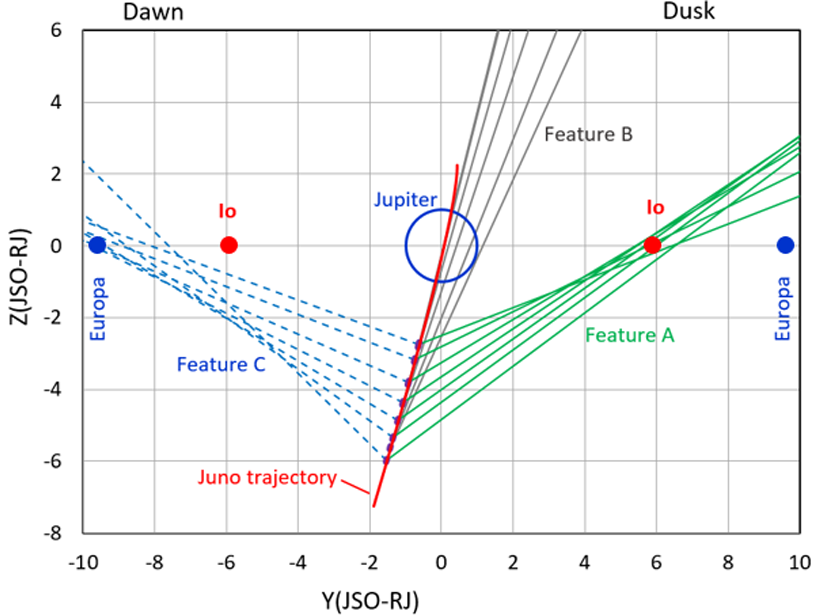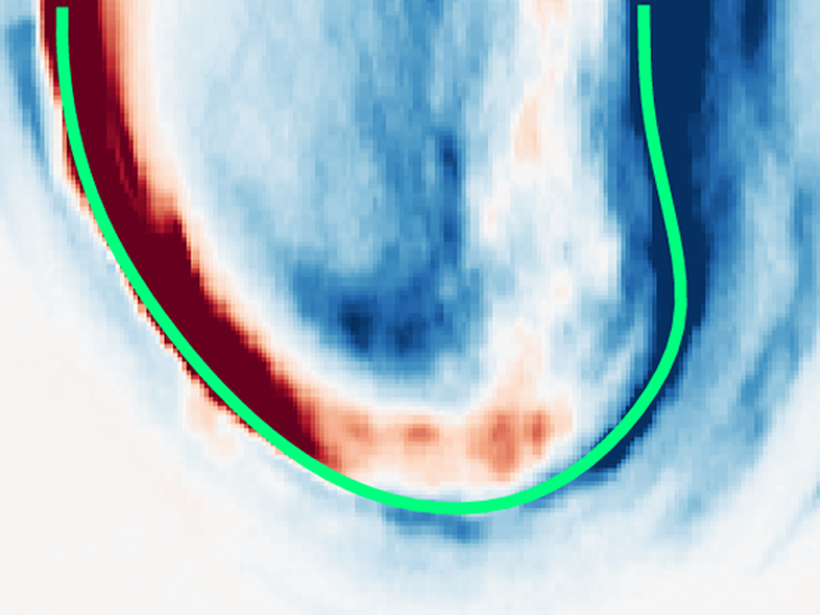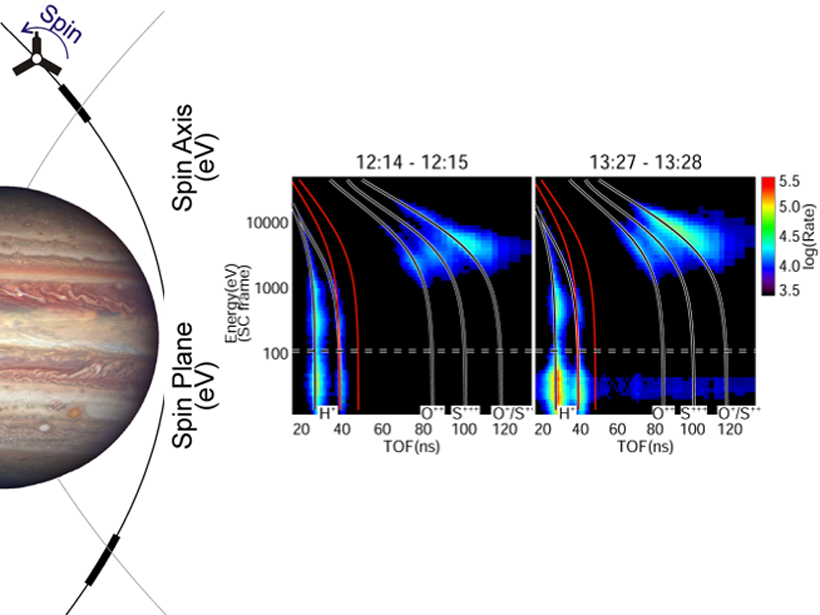New research considers the effect of Jupiter’s Galilean moons on each other’s oceans for the first time.
Jupiter
“Mushballs” May Drive Ammonia Transport on Jupiter
Hail might account for observed depletions of ammonia in the planet’s atmosphere.
New Energetic Neutral Atom Emissions from Jupiter, Io, and Europa
The first Jovian off-equator Energetic Neutral Atom viewings reveal distinct emissions from Jupiter and the orbits of Io and Europa: Energetic particle injections surprisingly occur inside Io’s orbit.
Two Moons and a Magnetosphere
Decades of research have illuminated how Io and Europa shape—and are shaped by—Jupiter’s giant magnetosphere.
Using a Machine to Help Us Learn About Jupiter’s Aurora
A first usage of principal component analysis on Hubble images of Jupiter’s auroral ovals reveals the most common patterns, and machine learning classification reveals their physical causes.
Computers Tease Out Secrets of Jupiter’s Aurorae
Aurorae once classified by human eyes are now being sorted by machines. The change may help astronomers understand how the mysterious features are powered.
Does Io Have a Magma Ocean?
Future space missions will further our knowledge of tidal heating and orbital resonances, processes thought to create spectacular volcanism and oceans of magma or water on other worlds.
Jupiter’s Galilean Moons May Have Formed Slowly
A new model is the first to simultaneously explain many of the moons’ characteristics, including their mass, orbits, and icy composition
First Inside Look at Hot and Cold Ions in Jupiter’s Ionosphere
The first in-situ ion observations from NASA’s Juno spacecraft reveal the surprising, simultaneous presence of cold protons and hot oxygen and sulfur ions in the high-latitude ionosphere of Jupiter.
Massive Collision Cracked Young Jupiter’s Core
The gas giant’s interior reveals evidence of an ancient impact.










